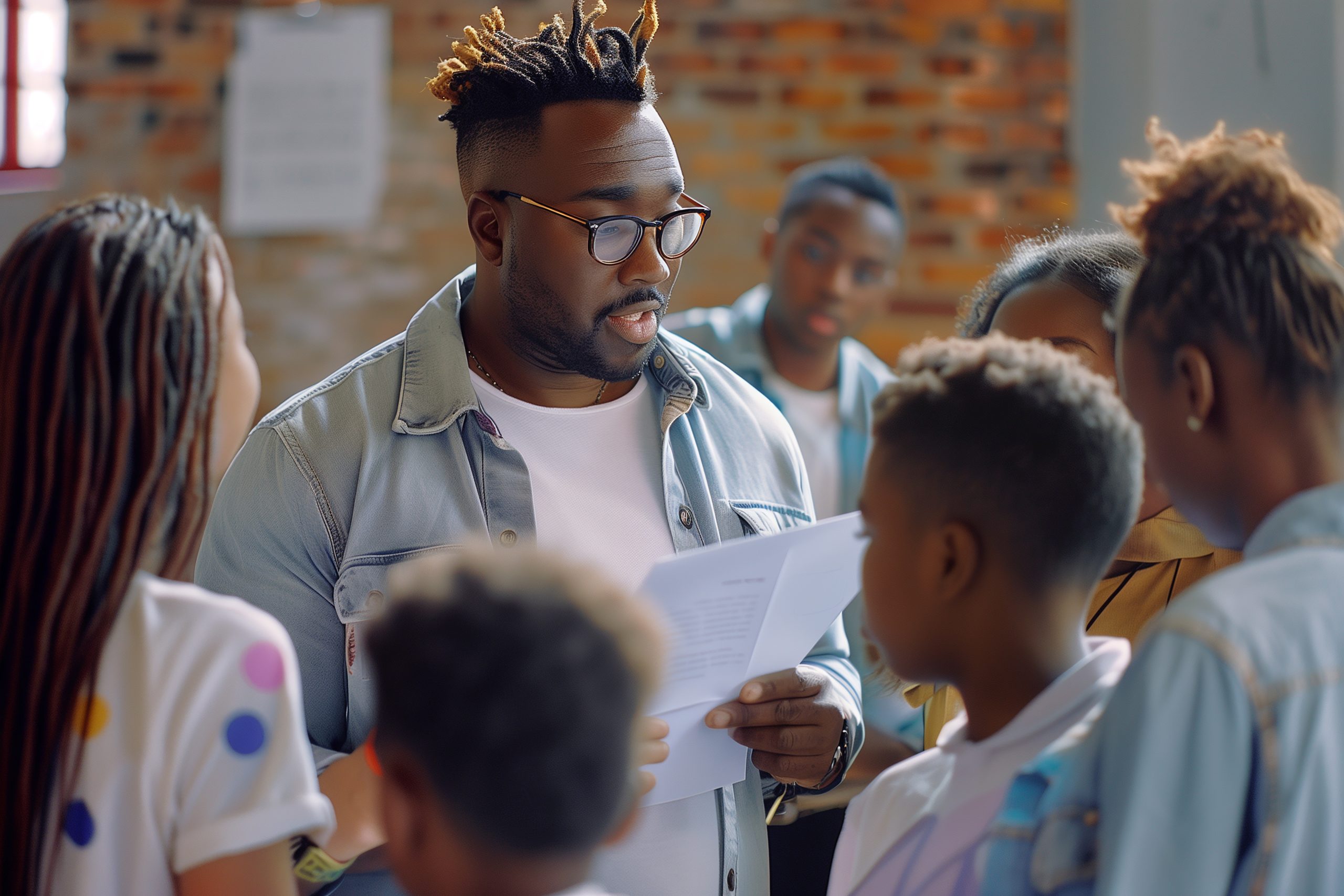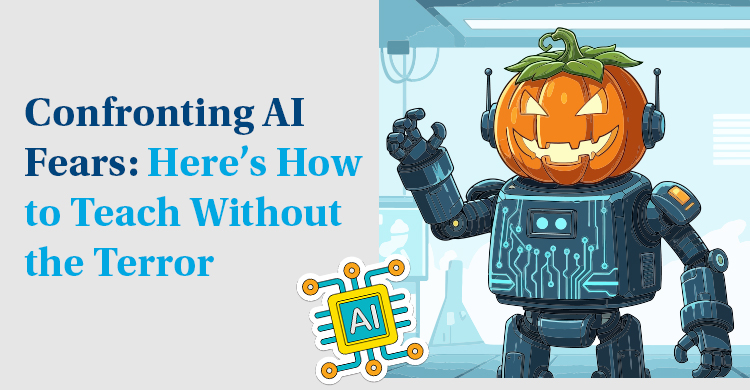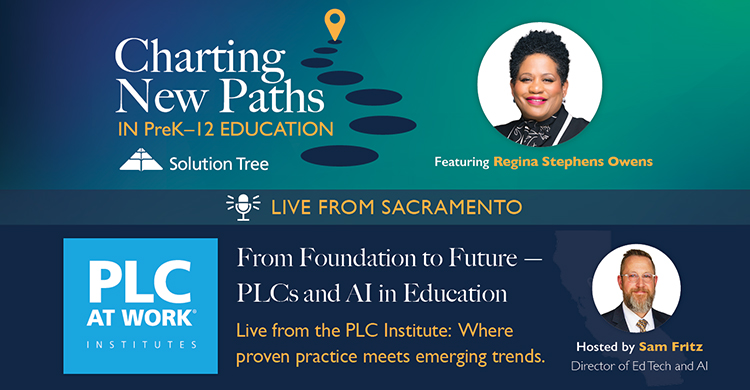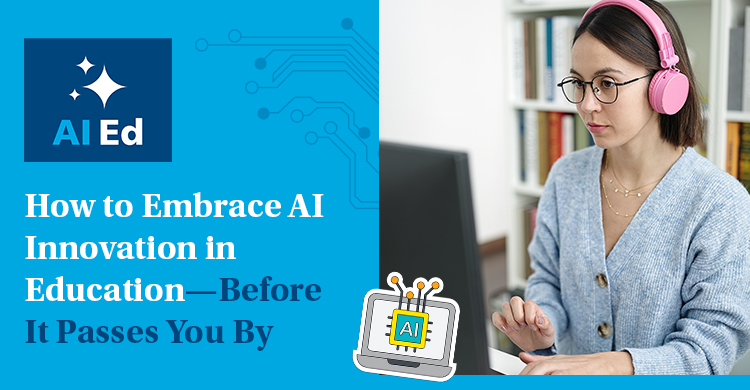AI 101: From one classroom computer to AI everywhere
In 2001, my first year of teaching, my classroom had one computer. Just one. My students and I thought we were cutting-edge. I created a schedule so small groups could rotate through the computer each day—reading online articles, making their first PowerPoint slides, or, if they finished early, taking a turn at the classic game Oregon Trail.
Nearly 25 years later, that beige desktop humming in the corner feels like an artifact worthy of a technology museum. Today’s students carry more computing power in their pockets than NASA used to land on the moon. Artificial Intelligence is no longer tucked away in research labs. It shows up in the Chromebooks students use in class, the games they play after school, and even the smart speakers sitting in kitchens at home.

The hidden AI divide: How to bring parents and educators together
This generation of digital natives is walking into classrooms where technology is deeply ingrained and absolutely everywhere—and so the challenge for both parents and educators has changed. Once upon a time, we were teaching students how to find information—but now, information is a tidal wave and students must learn how to manage, evaluate, and use it responsibly. The truth is that our students are already using AI, whether we are ready to talk about AI 101 or not.
Consider this:
- More than a quarter of students used ChatGPT for schoolwork in 2024—double the number from just a year before.
- Nearly a third of children ages eight and under have experimented with AI, even though most platforms say they are not designed for them.
- Seven out of ten teenagers report using generative AI tools.
- More than half of parents say they support AI use in schools, yet only about one in five believe it is happening in their child’s classroom.
- Sixty percent of parents say their child’s school has never had a conversation with them about AI at all.
Two things are clear: AI is here to stay, and there is a growing communication gap between schools and families.
How the 3 Big Ideas of a professional learning community can help
Schools that function as professional learning communities (PLCs) are built on three big ideas: learning, collaboration, and results. These ideas have transformed how teachers work together to help every child succeed. What if schools used the same framework to strengthen their partnerships with families in this new age of AI?
Learning: Giving families the AI knowledge they need to support students
Parents do not need to become engineers or coders, but they do need a working knowledge of the tools their children are already using. Imagine a school that takes time during back-to-school nights to host a short, family-friendly AI 101 session. Instead of overwhelming jargon, families walk away with a simple understanding of how tools like Khanmigo, Socratic, or ChatGPT might show up in their child’s learning. Picture a librarian or counselor sending home a monthly tip sheet written in plain language, giving parents a new way to support homework or study habits.
At home, parents can use AI to break down tough homework problems step by step rather than just providing an answer. They can turn class notes into flashcards or study guides. They can use reading apps that recommend books at the right level, summarize stories, and even generate comprehension questions that turn a simple bedtime story into a moment of learning.
Collaboration: Bridging the school-home gap in the age of AI
Collaboration between families and schools has always been important, but in the age of AI, it becomes even more critical. Collaboration is not just fundraising or showing up for the fall festival—it is about genuine, two-way dialogue. Schools can invite families into the AI 101 conversation by sharing how AI is being used in classrooms and by explaining their policies in ways that make sense to parents. Families can, in turn, share their perspectives on how these tools might support learning at home.
For multilingual families, AI has the power to be transformative. Imagine a parent who once struggled to understand a newsletter now being able to translate it instantly into their first language—or a caregiver helping with an assignment after AI has rephrased the teacher’s directions into simpler terms. These tools can make families feel more connected and empowered rather than left out of the conversation.
Results: Using AI to help families understand student growth
The heart of the PLC process has always been about results. Every student should show growth and mastery of essential standards. AI can become a bridge that helps parents understand exactly where their child is thriving and where they may need more support.
Schools can provide curriculum maps, learning targets, and rubrics that outline what students are expected to know and be able to do. Parents can then use AI as a guide to make sense of assessments. Imagine a parent uploading a picture of their child’s completed math test and asking AI to explain, in plain language, which standards their child has mastered and which ones still need work.
The same parent can then ask the tool for specific, at-home strategies to build confidence. Maybe it generates a few practice problems—or maybe it suggests a simple game. Suddenly, the assessment is not just a grade on paper; it becomes a road map for growth that parents can actively support.

Guiding the next generation to use AI wisely . . .
That beige desktop of 2001 changed my classroom in small ways. Today’s AI tools are changing our classrooms, our homes, and our communities in ways that are much, much bigger. The question is not whether our students will use AI—they already are. The real question is whether schools and families will work together to learn AI 101 and ensure our children use these new tools wisely, responsibly, and powerfully.
Stay ahead with AI 🏃🏅
AI is here—and it’s shaping classrooms everywhere. Dive into our blogs and resources for actionable ideas and guidance to stay at the forefront of AI in education. While you wait for the next post in our AI Ed blog series, explore our other AI resources to get started with confidence—or check out our other AI Ed blogs!
About the authors
Nathaniel Provencio is an associate superintendent in Prince William County, Virginia. Under his leadership, Minnieville Elementary School was recognized as a Model PLC at Work and was the 2021 winner of the prestigious DuFour Award. Nathaniel is the author of Community Connections and Your PLC at Work®.
Robert Mountjoy is the former principal of West Side Elementary School in Rossville, Georgia, where he led his staff in developing a collaborative culture centered around the three big ideas of a professional learning community. He is passionate about equity, data-driven practices, and schoolwide systems.






